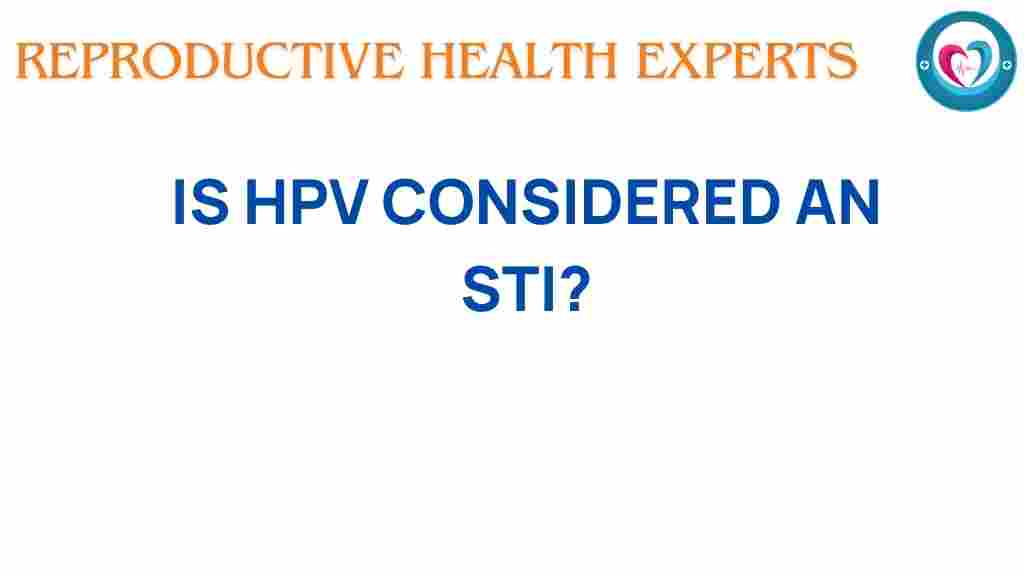Unraveling HPV: Is It Really an STI?
Human Papillomavirus (HPV) is a term that often surfaces in conversations about sexually transmitted infections (STIs). However, many people remain unaware of the complexities surrounding this virus, its health risks, and the importance of prevention and awareness. In this article, we will explore HPV in-depth, covering its symptoms, screening methods, and the vaccines available to combat it. By the end, you will have a clearer understanding of HPV and its implications for public health.
Understanding HPV
HPV is a group of more than 200 related viruses, of which about 40 are transmitted through direct sexual contact. While some types of HPV can cause health issues, such as genital warts and various cancers, many people infected with the virus remain asymptomatic. This characteristic makes HPV a significant public health concern, as it can spread without individuals being aware of their infection.
The Health Risks Associated with HPV
HPV is linked to several health issues, including:
- Genital Warts: Caused by low-risk HPV types, these warts can appear on the genital area, anus, or mouth.
- Cervical Cancer: Certain high-risk HPV types are responsible for the majority of cervical cancer cases.
- Other Cancers: HPV can also contribute to cancers of the anus, vulva, vagina, penis, and oropharynx.
Understanding these health risks is crucial for awareness, as early detection and treatment can significantly improve outcomes. Regular screenings and staying informed about HPV can help mitigate these risks.
Symptoms of HPV
Many individuals with HPV do not exhibit symptoms. However, when symptoms do occur, they may include:
- Genital Warts: Small bumps or groups of bumps in the genital area.
- Unusual Changes: Changes in the cervix detected during a Pap smear, which may indicate precancerous changes.
- Other Symptoms: Symptoms related to cancers, depending on the area affected.
Because many cases of HPV are asymptomatic, regular screening is vital for early detection and intervention.
Screening for HPV
Screening for HPV is an essential part of sexual health. The following methods are commonly used:
- Pap Smear: A test that detects changes in cervical cells, which could indicate HPV infection or precancerous conditions.
- HPV Test: A test that specifically checks for the presence of high-risk HPV types. It is usually performed concurrently with a Pap smear for women aged 30 and older.
Regular screenings can help identify HPV-related changes early, allowing for timely intervention and treatment.
Prevention Strategies for HPV
Preventing HPV infection involves several strategies:
- Vaccination: The HPV vaccine is highly effective in preventing infections by the most harmful types of the virus. It is recommended for preteens but can be given up to age 45.
- Safe Sex Practices: Using condoms and dental dams can reduce the risk of HPV transmission, although they do not eliminate it entirely.
- Regular Screenings: As previously mentioned, regular Pap smears and HPV tests can help detect any issues early.
These prevention strategies are essential to reducing the incidence of HPV and its associated health risks.
The Role of Vaccines in HPV Prevention
The introduction of HPV vaccines has revolutionized the approach to preventing HPV-related diseases. The vaccines, such as Gardasil and Cervarix, target the most common and dangerous strains of HPV:
- Gardasil: Protects against HPV types 6, 11, 16, and 18.
- Cervarix: Primarily protects against HPV types 16 and 18.
Vaccination is most effective when given before individuals become sexually active. However, it can still provide benefits to those who are already sexually active.
Awareness and Public Health Initiatives
Public health initiatives aimed at increasing awareness about HPV are crucial in combating this infection. These initiatives can include:
- Educational Campaigns: Informing the public about HPV, its risks, and prevention methods.
- Community Vaccination Programs: Providing easy access to HPV vaccinations, especially in underserved communities.
- Screening Programs: Encouraging regular screenings for cervical cancer and HPV testing.
Raising awareness can help reduce stigma surrounding STIs and encourage individuals to take proactive steps in protecting their health.
Troubleshooting Common Concerns about HPV
Many individuals have concerns or misconceptions about HPV. Here are some common questions and their answers:
- Is HPV only a concern for women? No, while HPV is often associated with cervical cancer, men can also develop HPV-related cancers and transmit the virus.
- Can HPV be cured? There is no cure for HPV itself, but many cases resolve on their own. However, associated health issues can be treated.
- Do I need to get vaccinated if I am already infected with HPV? Yes, the vaccine can protect against other strains of HPV that you may not yet have been exposed to.
Addressing these concerns can empower individuals to make informed health decisions.
Conclusion
In conclusion, understanding HPV and its implications as a sexually transmitted infection is vital for personal and public health. The health risks associated with HPV, including various cancers, make awareness and prevention essential. Regular screenings, vaccinations, and safe sex practices are key components in reducing the prevalence and impact of HPV.
By increasing awareness about HPV, we can foster a healthier society, reduce stigma, and encourage individuals to take proactive steps in preventing infections. For more information on HPV and public health initiatives, you can visit CDC’s HPV page. Together, we can work towards a future where HPV-related diseases are significantly minimized.
If you are interested in learning more about sexual health or need guidance on screening and vaccination, consider consulting with a healthcare professional or visiting your local health department.
This article is in the category Prevention and created by ReproductiveHealthExperts Team
